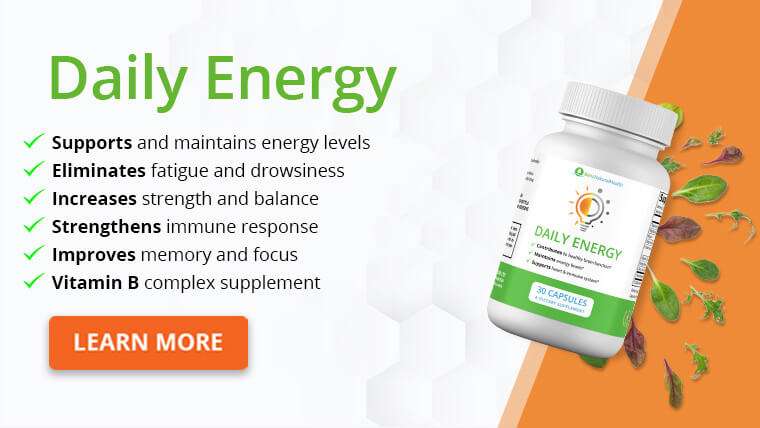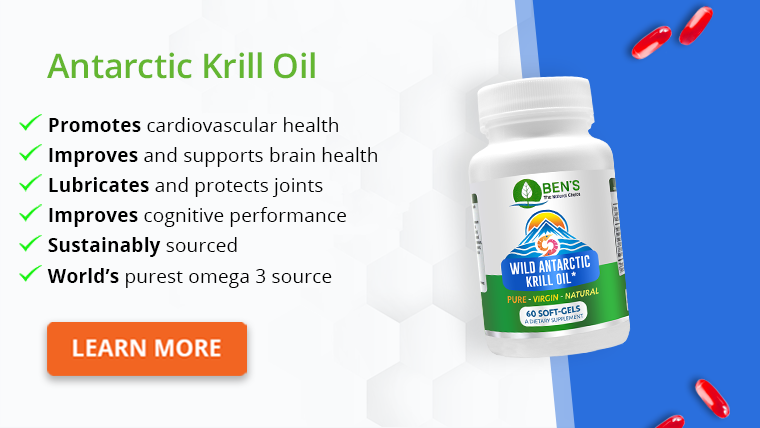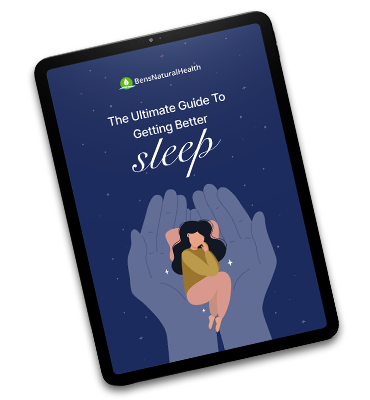This article will discuss the best foods to eat and avoid while on a POTS syndrome diet.
In the process, we will also review this condition and help you understand the recommendation of increasing your salt intake and taking salt pills.
What is POTS?
POTS is short for Postural Orthostatic Tachycardia Syndrome.
To understand what that means, let’s break it down into four parts:
- Postural: It refers to the position of your body. In POTS, patients start experiencing symptoms when they change their posture.
- Orthostatic: This is a natural body response when you change your position from sitting to standing or vice versa. Your blood pressure drops after standing, and your body would typically activate the sympathetic nervous system to prevent hypotension.
- Tachycardia: It is the clinical name for a fast heart rate. In POTS, patients have a dysregulated autonomic system. Instead of returning the blood pressure back to normal, the body increases the patient’s heart rate.
- Syndrome: It’s a set of signs and symptoms that often repeat themselves in patients and create a disease pattern. Some patients may not have the same signs and symptoms but still follow a similar way.
Now we know what the words mean, it is easier to understand that POTS is a dysautonomia or neurological disorder caused by an abnormal response of autonomic nervous function, typically to a change in body position. POTS is most common in older women, especially between 15 and 50 (1).
POTS is not life-threatening but can have a negative impact on quality of life. There are several treatment options, including medication, lifestyle changes, and dietary changes.
What are the symptoms of POTS?
The symptoms of POTS are triggered when you go from a seated or lay-down position to standing. They often include:
Tachycardia
This is the most important symptom and one that gives the name to this syndrome. Tachycardia happens because your body is unable to raise your blood pressure. Your heart is trying to compensate for transient hypotension with a rapid heart rate.
Headaches
In a POTS flare-up, different areas of your body receive a lower blood and oxygen supply. One of them is the brain, and that’s why you experience a headache.
Dizziness
Similarly, a low oxygen supply to the brain gives you a sensation of dizziness because your neurons work with a reduced oxygen supply. In rare cases, this can trigger a syncope, the clinical name of fainting.
Fatigue
Not having adequate oxygen and nutrient intake, your muscles will underperform, and your brain will quickly feel overwhelmed or tired. For the same reason, these patients will also have a degree of cognitive impairment.
Other symptoms include abdominal pain, nausea, suprapubic pain, or increased urinary frequency. The gut-related problems in POTS can also lead to unintentional weight loss and dehydration, further complicating the problem.

What can make POTS worse?
POTS is a neurologic problem that reflects in your blood pressure. It triggers transient hypotension, and your body’s natural response is to raise your heart rate.
But even when hypotension is corrected, the heart rate is still up, which can be due to a hormonal, autoimmune, hypovolemic, or neuropathic problem.
Regardless of the cause, POTS is often triggered by anything that creates metabolic stress or changes in blood volume. For instance:
- Viral infections: They precipitate a response with antibodies. If your POTS is linked to autoimmune problems, a viral infection will probably trigger an attack.
- Trauma: Car accidents, fractures, and other trauma activate your adrenal glands, which trigger tachycardia and other POTS symptoms.
- Surgery: Even if you’re not conscious during surgery, your organism responds the same way. Adrenal glands are activated, and they can trigger a flare-up.
- Pregnancy: During pregnancy, new blood vessels are formed, and your blood circulation changes even more if you have POTS syndrome. The blood volume is not the same, which can precipitate an episode of POTS.
There are also contributing factors that do not necessarily behave as triggers but can make your symptoms worse:
- Sedentary behavior makes your cardiovascular system react more aggressively to adrenal impulses.
- Sleeping problems, which may, by themselves, trigger cardiovascular symptoms.
- Decreased fluid intake reduces blood volume and makes you more likely to experience hypotension.
- Some drugs, such as serotonin reuptake inhibitors and amphetamines.
- Prolonged heat exposure, which can trigger persistent tachycardia by itself.
- Alcohol and coffee further dysregulate the nervous system and worsen your POTS prognosis.
Knowing all this about POTS, you probably understand by now why it is so important to increase salt intake. Moreover, they often recommend using salt tablets for POTS to regulate the autonomic nervous system.
Treatment includes gradually increasing the daily salt tablet dose to prevent postural hypotension and hypovolemia, which often trigger POTS flare-up symptoms.
10 foods to eat if you have POTS
There are many foods you can eat in your POTS syndrome diet. In general, a diet for POTS patients should have these features:
- Favoring foods high in salt levels
- Limiting your intake of sugar and simple carbohydrates
- Reducing the intake of diuretic foods
- Keeping your meal portions small and eating more often if you need to compensate
- Drinking plenty of liquids
For example, you could include these top 10 foods high in salt for POTS:
1) Anchovies
You can get more than 3500 mg of salt in 100 mg of anchovies. This makes them a nice treat or snack to try if you have POTS.
2) Bacon
This contains around 1700 mg of salt per 100 mg. Bacon is also very high in protein levels, but overeating can also raise your cholesterol levels, so be mindful of that.
3) Cheese
Some types of cheese are saltier than others. For instance, American cheese contains over 450 grams of salt per ounce, and Parmesan cheese gives you 390 mg.
4) Corned beef
It’s a cured meat and a salty type that would otherwise be unhealthy. But in POTS, it is recommended to maintain your salt intake high.
5) Miso soup
Besides increasing your fluid intake, miso soup is also high in salt, with over 1000 mg of sodium per 2-cup serving. This makes it one of the best soups for POTS.
6) Olives
You probably know that olives contain healthy fats and plenty of nutrients. They also have 700 mg of sodium per 100 grams, which is a decent amount if you have POTS.
7) Pickles
If you’re looking for an afternoon snack, pickles can be a good diet option for POTS syndrome. They contain a bit more than 1200 mg of sodium per 100 grams.
8) Salami
This is another cured meat that works very well if you have POTS. You get up to 1700 mg of sodium per 100 grams, plus plenty of protein and a load of B vitamins.
9) Salted nuts
This is another snack typically recommended for POTS patients. If you’re into nuts, look for salty options, not caramelized.
10) Soy sauce
One of the benefits of Asian food for patients with POTS is soy sauce, which comes in contact with almost every step of the cooking process and is loaded with sodium.

13 foods and drinks to avoid with POTS
Sugary foods and those filled with carbs are not appropriate for a POTS diet plan. You have probably felt the sensation of drowsiness or sleepiness after eating too much.
That’s because blood circulation favors your gastrointestinal system to enhance nutrient absorption. Such a redistribution of blood volume can trigger tachycardia and POTS flare-ups.
Another recommendation is to reduce the intake of diuretic foods and drinks. This is because they reduce blood volume, a diet trigger for POTS syndrome.
Thus, the main foods you want to avoid are high in carbs or starch, including:
Potatoes
Potatoes contain high levels of starch, which can make you experience fatigue, as mentioned above.
Sugary foods and drinks
Sugar can cause spikes and crashes in your blood sugar levels, which is also associated with fatigue.
White bread
Unlike whole wheat, white bread doesn’t contain much fiber and can cause blood sugar spikes, increasing your POTS symptoms after eating.
Grapes
This is one of the best examples of healthy food in almost every way, but not recommended in POTS.
It has a diuretic effect that may reduce blood volume and trigger your symptoms. It also has plenty of carbs. Watermelon, pears, and pineapple fall in the same category.
Parsley
Spices such as parsley are also natural diuretics and should be avoided for the same reason. Ginger, dandelion, and oregano have the same diuretic property.
We should also save a special mention to two drinks that you should definitely avoid and why:
Alcohol
Even healthy adults can experience passing out spells with alcohol. It is known to impair smooth muscle response to regulate blood pressure.
Instead of tightening to prevent hypotension, blood vessels can even relax and worsen the problem. The body responds by triggering tachycardia and POTS.
Coffee
One of the causes of POTS is an increase in adrenergic hormones. Coffee makes people feel more alert by activating adrenergic glands. Thus, if you have this type of POTS, coffee will activate the symptoms and trigger or worsen a flare-up.
Allergies and intolerances
There are different types of food allergies and intolerances. A food allergy is caused by an abnormal reaction to a food, such as a shellfish or peanuts, whereas a food intolerance is a lack of an enzyme needed to digest a specific food. But sometimes, an intolerance can also trigger an immune reaction, as in gluten intolerance.
We mentioned above that many things could trigger POTS. One of them was autoimmune problems; even viral disease can trigger the symptoms by increasing antibody production. The same happens with dairy, gluten, and peanuts if you eat them as an allergic or intolerant patient.
Sign Up For Our Newsletter!
- Receive 10% off our best-selling supplements
- Get Your FREE Sleep Guide
- Be the first to hear about sales and promotions
- Stay up to date on our latest health news
Lifestyle changes to help manage your POTS symptoms
In order to manage your POTS symptoms, lifestyle changes can also help a lot. Your doctor will probably recommend the following:
- Establish a healthy sleep routine and be mindful of your sleep hygiene
- Eat smaller and more frequent meals
- Use compression garments, especially if you have circulation problems in your legs
- Avoid prolonged standing
- Exercise often with a POTS workout plan
- Keep your temperature even
- Keep a diary with your symptoms to mark your triggers
Conclusion
POTS, or postural orthostatic tachycardia syndrome, is a medical condition that affects the body’s autonomic nervous system. It can lead to tachycardia, dizziness, and fatigue.
Patients with POTS syndrome should increase their sodium intake, reduce the consumption of diuretics in their diet, and avoid alcohol and coffee.
Besides natural treatments for POTS, you will also need medical treatment that your healthcare provider will prescribe.
Explore More








